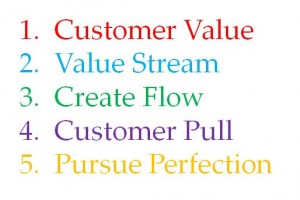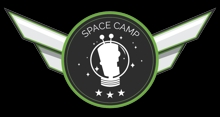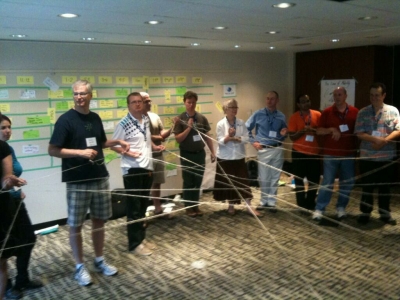by Susan Johnston | Jul 13, 2013 | Build your own skills, Rants, Ramblings and Riddles |
 I’m getting lean. Alas, this is not about my body. It’s something I’ll call “lean communication.” I’m not about to preach on short sentences and plain words, though that can be part of it. I’m convinced that good communication reduces waste.
I’m getting lean. Alas, this is not about my body. It’s something I’ll call “lean communication.” I’m not about to preach on short sentences and plain words, though that can be part of it. I’m convinced that good communication reduces waste.
In manufacturing, the concept of “lean” describes practices that use fewer resources to provide greater value to customers. Anything customers don’t value enough to pay for is considered “waste,” something to eliminate. Lean practices originated in manufacturing in the 1940s, when Taiichi Ohno introduced them at Toyota. Over the years, they’ve been adopted and adapted in many contexts, including lean startups and lean software development.
When I look at the ideas I use with my communication coaching clients, I see a lot of overlap with lean principles, particularly those set out by the Lean Enterprise Institute. I’ve paraphrased them, but you can find the original version here.
1. Establish value from the customer’s perspective
This is my top tip for communication. I never tire of sharing it because it works so well. The audience for any communication might be considered your “customers.” The more you can make your communication about them and their needs, the more likely you are to be listened to, heard and understood. Whether you’re addressing one person or 100, in conversation, in presentations, in broadcast or in writing, you can almost never go wrong if you explain your point from the perspective of your audience. You make people care about your message by answering their question, “What’s in it for me?” (WIFM) That’s the value will it have for them. When you talk about anything they don’t value – no matter how much you love it – you waste your time and theirs. (more…)
by Susan Johnston | Jul 3, 2013 | Uncategorized |
 When my professional communicator friends ask what I’m up to, I need to explain – non-techie to non-techie – what ‘agile’ means. I tell a story that goes something like this:
When my professional communicator friends ask what I’m up to, I need to explain – non-techie to non-techie – what ‘agile’ means. I tell a story that goes something like this:
“Being agile is about business sustainability. It’s an approach to work that lets an organization respond to changes in its environment – customer needs, market fluctuations, new technology, competitor moves, resource constraints, whatever.”
Communicators get that. We pay attention to the business environment. We’re also familiar with change, since most of what we advise on or write about has something to do with something new.
It’s about change
“Since every part of the business uses computers, change can’t happen without systems changes. Even great communication can’t compensate for crappy tools. But developing systems can be slow and expensive and, sometimes, by the time you’re done, the target has moved and more changes are needed.”
Heads nod. Everyone’s witnessed this. (more…)
by Susan Johnston | Jun 27, 2013 | Uncategorized |
 A long time ago, in a galaxy far away, I was a television reporter. The radio people, with whom we shared a newsroom, called us “vidiots.” Were we insulted? No way! We wore the title with pride.
A long time ago, in a galaxy far away, I was a television reporter. The radio people, with whom we shared a newsroom, called us “vidiots.” Were we insulted? No way! We wore the title with pride.
As someone in the business of face-to-face communication, I know I should be using video to share ideas. But memories of a world where smart professionals looked after shooting and editiing make me reluctant to wade into the land of do-it-yourself TV. So I was delighted to be invited to Video Space Camp, a full day of learning, brought to us by Vidyard. (It’s an amazing company I think of as “YouTube for real business.”)
There’s no way to capture a full day’s learning in a blog post, but here are the highlights, as seen through my lens. (more…)
by Susan Johnston | Jun 25, 2013 | Uncategorized |
 I have no idea why they call it “camp.” It’s held in summer, there are games and it’s fun. But you’re unlikely to get a sunburn at Agile Coach Camp. And there are no spiders – though we did build a web – literally and metaphorically.
I have no idea why they call it “camp.” It’s held in summer, there are games and it’s fun. But you’re unlikely to get a sunburn at Agile Coach Camp. And there are no spiders – though we did build a web – literally and metaphorically.
The weekend attracts people whose role is to help introduce new ways of working, primarily in software development. Communication is at the heart of the work of the agile coach as he or she helps teams work in more human-centric ways. Coach camp invites them to bring ideas and questions to discuss with colleagues in a conference framework called “open space.”
The French term for “attend” is “assister.” At ACC, participants truly do “assist.” We’re not watching a presentation; we’re part of a dialogue. I am rarely in a situation where so many people are listening carefully to what others are saying. Nor did anyone seem to be trying to impress anyone. (This crowd may be hard to impress.)
(more…)
by Susan Johnston | Apr 14, 2013 | Rants, Ramblings and Riddles |
 In a lifetime of working in, studying and observing human communication, I’ve learned enough to fill about 100 books. If I had to distill it all into one actionable idea, it would be, “Make it about the audience.”
In a lifetime of working in, studying and observing human communication, I’ve learned enough to fill about 100 books. If I had to distill it all into one actionable idea, it would be, “Make it about the audience.”
This advice is as useful when you’re talking to one person as it is when you’re presenting to a crowd. It also works when you’re creating marketing material, running a meeting, writing an annual report or sending a note to your babysitter.
It’s a paradox. As business people, we’re communicating about our products or services. Or we might be looking for support for our idea in a meeting or giving instructions to employees. Our business. Our ideas. Our stuff. Doesn’t the communication have to be about us and what we want?
The answer is, “Not really.” The chance of someone understanding you – and doing what you’d like them to – is greater when you design the communication around them and their needs.
Who is your audience? What interests them? What do they need to hear? What do they think they know? What do you want them to do? Why should they care? Thinking about the answers to these questions as you create and deliver your message increases the chances you will reach the people you’re talking to and that they’ll understand your message. (more…)
 I’m getting lean. Alas, this is not about my body. It’s something I’ll call “lean communication.” I’m not about to preach on short sentences and plain words, though that can be part of it. I’m convinced that good communication reduces waste.
I’m getting lean. Alas, this is not about my body. It’s something I’ll call “lean communication.” I’m not about to preach on short sentences and plain words, though that can be part of it. I’m convinced that good communication reduces waste.



